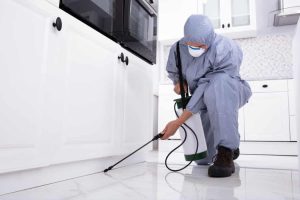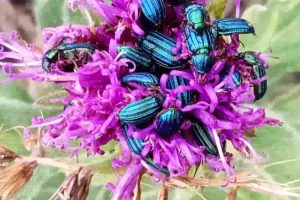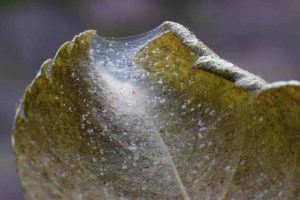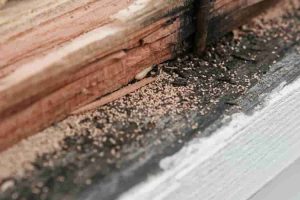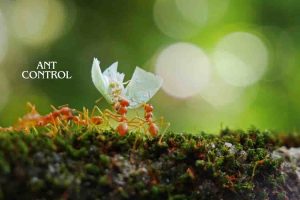Cockroach infestations are a common issue in Inner West Sydney, affecting many strata properties. The warm climate and urban density of Sydney make it a prime breeding ground for various cockroach species. In particular, German cockroaches are a prevalent concern, often found in large numbers inside electrical appliances and moist areas.
To tackle these problems, it’s essential to implement both preventive measures and targeted treatments. We recommend inspecting crevices and other hiding spots regularly, using passive baits, and engaging a Sydney professional pest control services when necessary. If you’re dealing with a significant infestation, don’t hesitate to seek help from experts like Inner West’s Best Cockroach Removal Service.
By addressing the root causes of cockroach infestations and maintaining a consistent, proactive approach, we can keep our homes and strata properties clean and pest-free. Regular communication with neighbors and property managers can also help in identifying and solving infestation issues swiftly.
Identifying the Various Cockroach Species in Sydney’s Inner West
In Sydney’s Inner West, various cockroach species can invade homes, each with unique characteristics. Knowing how to identify these pests helps us tackle infestations more effectively.
Characteristics of the German Cockroach
The German cockroach (Blattella germanica) is smaller than most other species, usually measuring around 10-15 mm long. They have a light brown color with two dark parallel stripes running from the head to the base of the wings. These cockroaches prefer warm, humid environments.
We often find them in kitchens and bathrooms where they can access food and moisture. They reproduce quickly, with females producing 20-40 eggs at a time. Identifying their droppings, which look like black pepper flakes, helps us locate their hiding spots.
Identifying the American Cockroach
American cockroaches (Periplaneta americana) are one of the largest species, ranging from 35-40 mm in length. They are reddish-brown with a yellowish figure-eight pattern on the back of their heads. These cockroaches prefer warm, moist areas.
Common habitats for them include basements, crawl spaces, and sewers. They are less likely to be found in kitchens and bathrooms compared to German cockroaches. Spotting their large, oval egg capsules, which they glue to surfaces, can help us identify an infestation.
Recognition Tips for the Australian Cockroach
The Australian cockroach (Periplaneta australasiae) resembles the American cockroach but is slightly smaller, about 35-40 mm long. They are reddish-brown with distinctive yellow markings on the thorax and wings. These cockroaches are often found outdoors in warm, moist environments.
We usually find them in gardens, compost heaps, and areas with decaying organic matter. Because they can fly short distances, they may enter homes when the weather changes. Recognizing their droppings and egg cases can help us confirm their presence.
Distinguishing the Oriental Cockroach
Oriental cockroaches (Blatta orientalis) are medium-sized, measuring 20-25 mm in length. They have a shiny, dark brown to black coloration and a strong, musty odor. These cockroaches prefer cooler, damp environments.
We typically find them in basements, under sinks, and around pipes. They are less likely to climb than other species, so they often remain at ground level. Identifying their egg cases and molted skins helps us pinpoint their locations.
Spotting Brown-Banded Cockroaches in Homes
The Brown-banded cockroach (Supella longipalpa) is small, about 10-14 mm long. They are light brown with two distinctive lighter bands across their wings and abdomen. These cockroaches prefer warm environments but can survive in drier areas than other species.
We often find them in living rooms, bedrooms, and behind pictures or furniture. Unlike other species, they are more likely to be found higher up rather than in kitchens or bathrooms. Detecting their small, pale egg cases can help us identify infestations.
Understanding the Health Risks Associated with Cockroaches
Cockroaches aren’t just a nuisance; they pose serious health risks. They can trigger allergies and asthma and carry diseases and pathogens.
Allergies and Asthma Triggered by Cockroaches
Cockroaches can release substances that provoke allergic reactions. Their saliva, feces, and shedding body parts become airborne, causing allergic responses. When these particles are inhaled, they can trigger asthma attacks. Individuals with compromised respiratory systems are particularly vulnerable.
Exposure to cockroach allergens can lead to symptoms such as coughing, nasal congestion, and skin rashes. For this reason, maintaining cleanliness and using proper pest control measures are crucial. Keeping food sealed and disposing of trash regularly helps minimize exposure to these allergens.
Cockroaches as Carriers of Diseases and Pathogens
Cockroaches are notorious carriers of various diseases. They can spread bacteria like Salmonella and E. coli, which can cause food poisoning. Cockroaches can also act as vectors for viruses such as Poliovirus and Hepatitis A, leading to severe illnesses.
Their ability to transfer microbes through their droppings, saliva, and regurgitated fluids poses a significant health threat. Controlling cockroach populations in living spaces is essential to prevent the spread of these pathogens. Regular cleaning, proper food storage, and professional pest control can help mitigate these risks. Learn more about the diseases cockroaches can spread from this source.
Cockroach Infestations: Causes and Prevention
Cockroach infestations are a common problem in Inner West Sydney strata. Understanding the causes of infestations and knowing how to prevent them can help maintain a clean and pest-free environment.
Factors Contributing to Cockroach Presence
Cockroaches are attracted to several factors in our homes. Food is a primary attractant; even small crumbs can draw these pests. Garbage, especially if it’s left out overnight, provides an easy meal for them.
Warm, dark, and damp areas are ideal breeding grounds for cockroaches. They often hide in cracks and crevices, drains, and around electrical appliances where these conditions are common.
They also enter through tiny gaps and openings in doors, windows, and walls. Once inside, they seek out hidden spots and multiply rapidly. Ensuring these entry points are sealed is crucial in preventing infestations.
Practical Prevention Measures for Homes and Apartments
Keeping our homes clean and free from food particles is essential. We should immediately clean up spills and properly store food in airtight containers. Regularly taking out the garbage and maintaining a lid on bins helps reduce attractants.
Fixing leaks and eliminating sources of water removes vital resources that cockroaches need to survive. Sealing cracks and crevices around the house, especially around sinks and pipes, can block their entry points.
Utilizing weather stripping and caulk around windows and doors also helps. Regular inspection of appliances and other potential hiding spots ensures these pests can’t settle in. Following these practical measures helps us maintain a cockroach-free home in Inner West Sydney.
Professional Pest Control Solutions in Strata Management
Engaging a professional pest control service in strata management ensures comprehensive pest management and peace of mind for property managers and residents. Our focus is on choosing dependable services and creating tailored treatment plans for every strata complex.
Selecting a Reliable Pest Control Service
Finding a reliable pest control service is crucial for effective strata pest management. We recommend looking for companies with valid certifications and comprehensive insurance. These elements guarantee that services follow industry standards and protect our property.
Reviews and testimonials from other strata properties provide insight into the company’s reliability. A good pest control service should offer a warranty on their treatments, ensuring they will return if pests reappear. We also value companies that use eco-friendly and safe methods, reducing health risks for residents.
Tailored Treatment Plans for Strata Complexes
Each strata complex has unique needs, so tailored treatment plans are essential. Professional pest control services should conduct a thorough inspection of the property to identify specific problem areas and pest types.
For cockroach pest control, targeted strategies are necessary due to their resilience and health risks. This includes regular inspections, proper waste management, and strategic use of pesticides. Keeping detailed records of all pest management activities helps monitor effectiveness and plan future treatments.
DIY Cockroach Control: Tips and Techniques
We’ll explore various methods you can use to manage cockroaches on your own. We’ll discuss the effectiveness of home remedies and detail when and how to use roach baits and traps.
Home Remedies and Their Effectiveness
Using home remedies can be a practical first step to control cockroaches. One popular method is using baking soda and sugar. This mixture attracts and dehydrates roaches, killing them. Place it in areas where you suspect they are hiding.
Boric acid is another effective option. It acts as a poison for cockroaches when they ingest it. Sprinkle it lightly in corners and dark areas where roaches are known to roam.
Essential oils, such as peppermint or tea tree oil, can repel cockroaches. They dislike the strong scent. Mix a few drops with water and spray it in problem areas.
Glue traps can help you monitor and reduce the population by catching nymphs and adults. Place these under appliances or in dark corners.
When to Use Roach Bait and Traps
Roach baits and traps are highly effective in reducing a cockroach infestation. Roach baits contain slow-acting poison mixed with attractants. Cockroaches consume the bait and carry it back to their nests, affecting the entire colony. These can be placed near entry points and in high-traffic areas.
Roach traps like glue traps are great for monitoring and reducing the cockroach population. Set them in hidden areas where roaches travel. They catch nymphs, adults, and sometimes even egg capsules.
When infestations become noticeable, combining both traps and baits can provide a more effective solution. Keeping an eye on the traps helps us determine if the infestation is decreasing. Using these techniques strategically can help us manage cockroach problems efficiently.
Maintenance and Sanitation to Discourage Infestation
Keeping our Inner West Sydney strata free from cockroach infestations requires a combination of regular cleaning and thorough inspections. We need to focus on kitchens and bathrooms, as these areas are common hotspots for pests.
Routine Cleaning Advice for Kitchens and Bathrooms
Kitchens and bathrooms are crucial areas for cleaning when it comes to preventing cockroach infestations. We must ensure that food scraps are properly disposed of and not left out on counters. Regularly wiping down surfaces, including countertops and sinks, helps eliminate crumbs and spills where cockroaches can feed.
In kitchens, it’s essential to clean behind and under appliances like stoves and refrigerators. These spaces often collect crumbs and food particles.
Additionally, storing food in sealed containers can prevent pests from accessing a food source.
In bathrooms, we need to address moisture issues, as cockroaches thrive in moist environments. Fixing leaky faucets and ensuring good ventilation can help reduce the chances of infestation. Keeping bathrooms clean by regularly scrubbing sinks, bathtubs, and toilets can also deter cockroaches from settling in.
Importance of Regular Inspections and Sealing Entry Points
Routine inspections are vital in identifying potential cockroach entry points. We should check for cracks and crevices in walls, floors, and around plumbing fixtures. Sealing these gaps with caulk can prevent cockroaches from entering our living spaces.
Inspections should also involve looking for signs of infestation, such as droppings or egg cases, particularly in hidden areas behind furniture or within wall crevices. Early detection can help us take swift action to address a problem before it becomes worse.
Using weather stripping around doors and windows can help keep pests from getting inside. Additionally, ensuring that vents and chimneys have screens can block another common entry point for cockroaches.
By combining regular cleaning with thorough inspections and maintenance, we can significantly reduce the risk of cockroach infestations in our Inner West Sydney strata.
Understanding Cockroach Behavior for Better Management
Knowing the behavior of cockroaches is crucial to managing them effectively. We will explore their nocturnal activity, common habitats, feeding preferences, and their breeding cycle.
Cockroach Nocturnal Activity and Common Habitats
Cockroaches are primarily nocturnal creatures. They are most active during the night, searching for food and water. This behavior helps them avoid predators and human interaction. By understanding their nighttime activity, we can plan our intervention methods more effectively.
Cockroaches prefer warm, moist environments. Kitchens and bathrooms are common habitats due to the presence of water sources and food scraps. They often hide in cracks, crevices, and around appliances where it’s dark and humid. Identifying and sealing these entry points can help in reducing their access.
Feeding Preferences and Breeding Cycle Insights
Cockroaches are omnivorous and have a varied diet. They feed on almost anything, including food scraps, paper, and even glue. Reducing clutter and maintaining cleanliness can eliminate their primary food sources, making your home less attractive to them.
Cockroaches have a rapid breeding cycle. Females produce egg capsules, each containing multiple eggs. These capsules can be hidden in secluded areas, making early detection and removal essential. By understanding their breeding cycle, we can better time our control measures to target their population effectively.
Legal Responsibilities and Strata By-Laws for Pest Control
In Inner West Sydney, pest control responsibilities in strata properties are clearly defined. It’s important to know who handles what to avoid disputes and maintain a healthy living environment.
Strata Management and By-Laws
Strata management teams must follow the strata by-laws, which outline responsibilities for pest control. These by-laws help determine whether owners or the strata corporation must address pest issues.
Owners’ Responsibilities
If pests are found within the confines of an individual unit, the owner typically must manage it. This includes hiring pest control services for issues such as the Australian Cockroach in kitchens or bathrooms.
Strata Corporation Duties
For pests found in common areas like foyers, hallways, or shared facilities, the strata corporation has to step in. Our by-laws ensure these shared spaces are treated, keeping all residents safe.
Legal Advice
Sometimes, determining responsibility can be tricky. Seeking legal advice can clarify who should handle specific pest problems. Legal professionals can interpret by-laws and ensure proper actions are taken.
Dispute Resolution
If disagreements arise, mediation or negotiation might be necessary. These methods help resolve differences over pest control responsibilities without resorting to legal battles.
For more details on legal responsibilities, check out Pests in NSW Rentals: Who Is Liable? and Does Strata Pay for Pest Control in New South Wales. These resources provide additional insights into local laws and regulations.
On-Time Service

5 STAR SERVICE BASED ON 100+ GOOGLE REVIEWS
PET & FAMILY FRIENDLY TREATMENT

ALL YEAR-ROUND PROTECTION
Take Back Control Now
8
REASON TO CHOOSE SAFE PEST CONTROL
- Guarantee protection all year-round
- 30 Years Collective Experience
- An impeccable reputation across Sydney's Suburbs
- Certified treatments & written Warranty On all work carried out
- Family Owned & Operated
- Rated #1 Pest Control In Sydney NSW
- No Mess, No Smell
- Family & Pet Friendly Treatments
REQUEST A QUOTE

